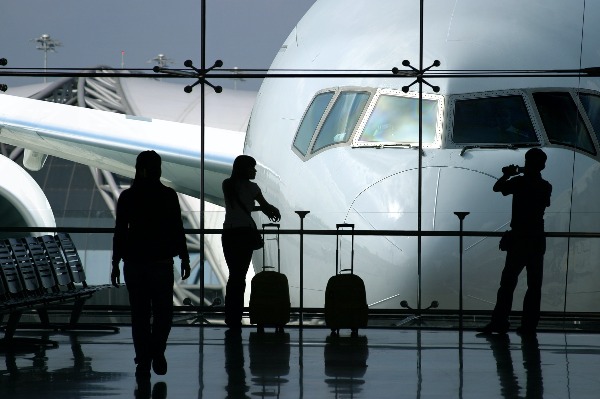IATA Calls For Government Action On Key Issues

Lots of news from IATA these days.
To begin with, the association is calling on governments to further support the safe carriage of lithium batteries by developing and implementing global standards for screening, fire-testing, and incident information sharing.
It notes that as with many products shipped by air, effective standards, globally implemented, are needed to ensure safety. The challenge is the rapid increase in global demand of lithium batteries (the market is growing 30% annually) bringing many new shippers into air cargo supply chains. A critical risk that is evolving, for example, concerns incidents of undeclared or mis-declared shipments.
IATA has long called for governments to step-up enforcement of safety regulation for the transport of lithium batteries. This should include stiffer penalties for rogue shippers and the criminalization of egregious or willful offenses. IATA asked governments to shore up those activities with additional measures:
- Development of safety-related screening standards and processes for lithium batteries — Development of specific standards and processes by governments to support the safe transport of lithium batteries, like those that exist for air cargo security, will help provide an efficient process for compliant shippers of lithium batteries. It is critical that these standards and processes be outcome based and globally harmonized.
- Development and implementation of a fire-testing standard that addresses lithium battery fire containment — Governments should develop a testing standard for fires involving lithium batteries to evaluate supplementary protection measures over and above the existing cargo compartment fire suppression systems.
- Enhance safety data collection and sharing information between governments — Safety data is critical to understanding and managing lithium battery risks effectively. Without sufficient relevant data there is little ability to understand the effectiveness of any measures. Better information sharing and coordination on lithium battery incidents among governments and with the industry is essential to help managing lithium battery risks effectively.
These measures would support significant initiatives by airlines, shippers, and manufacturers to ensure lithium batteries can be carried safely. Actions have included:
- Updates to the Dangerous Goods Regulations and the development of supplementary guidance material,
- The launch of a Dangerous Goods Occurrence Reporting Alert System that provides a mechanism for airlines to share information on events involving undeclared or mis-declared dangerous goods,
- The development of a Safety Risk Management Framework specifically for the carriage of lithium batteries.
- The launch of CEIV Lithium Batteries to improve the safe handling and transport of lithium batteries across the supply chain.
As well, IATA is urging governments to work closely with the aviation industry to ensure that aviation and incumbent aviation safety systems can safely co-exist with new 5G services.
It says that while IATA recognizes the economic importance of making spectrum available to support next generation commercial wireless telecommunications, maintaining current levels of safety of passengers, flight crews, and aircraft must continue to be one of governments’ highest priorities.
The call came as the industry was meeting recently in Doha, Qatar at the 78th IATA Annual General Meeting.
Before deciding on any spectrum allocations or conducting spectrum auctions, IATA called for governments to ensure close coordination and mutual understandings between national spectrum and aviation safety regulators so that each frequency allocation/assignment is comprehensively studied and is proven not to adversely impact aviation safety and efficiency. Robust testing in coordination with aviation subject matter experts is critically important in providing necessary information.
Measures that have already been used by some governments include:
- Ensure thorough testing, sufficient spectrum separation between 5G C-band deployments and 4.2-4.4 GHz frequency band used by existing radio altimeters
- Clearly codify and enforce the maximum power limit for 5G C-band transmission and downward tilting of 5G antennae particularly in the vicinity of flightpaths
- Establishment of sufficient 5G C-band prohibition and precautionary zones around airports
IATA noted that airlines operating to/from and within the US continue to contend with the effects of the rollout of 5G, including a pending airworthiness directive from the Federal Aviation Administration requiring them to retrofit/upgrade radio altimeters at their own expense to enable the respective aircraft to continue to utilize CAT II and CAT III low-visibility approaches at many US airports where 5G C-Band service is currently or will be deployed in future.
The timely availability of upgraded altimeters is a concern, as are the cost of these investments and the lack of certainty regarding the future spectrum environment.
Furthermore, 19 additional telecommunications companies are scheduled to deploy 5G networks by December 2023.
Finally, IATA is calling on governments to urgently put in place large-scale incentives to rapidly expand the use of sustainable aviation fuels (SAF) as aviation pursues its commitment to achieving net zero carbon emissions by 2050.
To fulfil aviation’s net zero commitment, current estimates are for SAF to account for 65% of aviation’s carbon mitigation in 2050. That would require an annual production capacity of 449 billion liters. Investments are in place to expand SAF annual production from the current 125 million liters to 5 billion by 2025. With effective government incentives, production could reach 30 billion liters by 2030, which would be a tipping point for SAF production and utilization.
IATA’s Director General, Willie Walsh said that: “Governments don’t need to invent a playbook. Incentives to transition electricity production to renewable sources like solar or wind worked. As a result, clean energy solutions are now cheap and widely available. With similar incentives for SAF, we could see 30 billion liters available by 2030. Though still far from where we need to be, it would be a clear tipping point towards our net zero ambition of ample SAF quantities at affordable prices.”
Go to www.iata.org for more.


